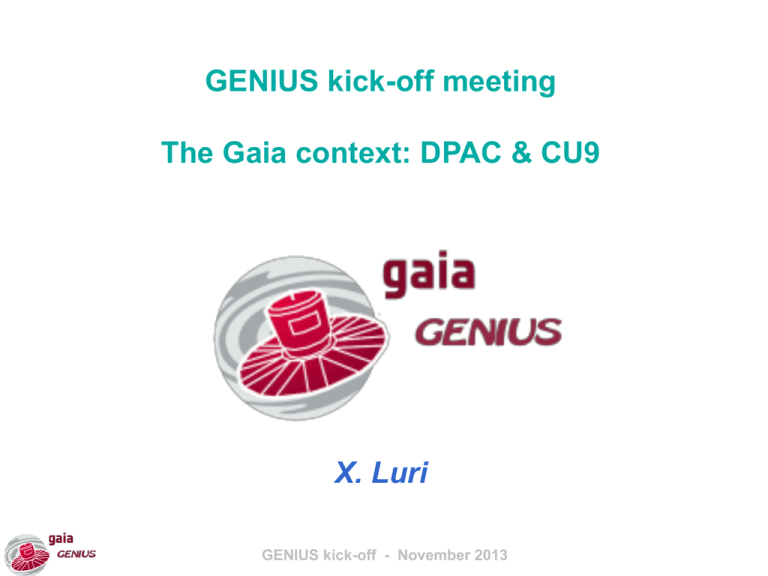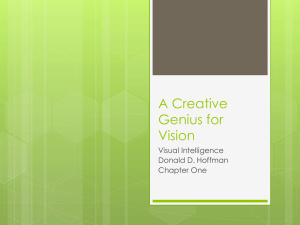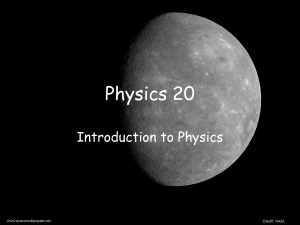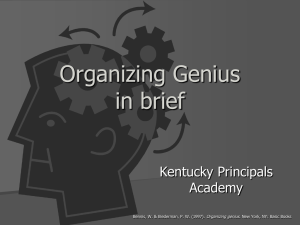DPAC & CU9
advertisement

GENIUS kick-off meeting The Gaia context: DPAC & CU9 X. Luri GENIUS kick-off - November 2013 The Gaia Data Processing & Analysis Consortium (DPAC) GENIUS kick-off - November 2013 Industry/ESA CSG/ESOC (2013) One consortium: the DPAC The final responsibility of the Mission is in the hands of ESA Data reduction is a responsibility of the scientific community, funded by the member states GENIUS kick-off - November 2013 Data Processing and Analysis Consortium • Formed to answer the Announcement of Opportunity (AO) for Gaia data processing • Involves large number of European institutes and observatories (>400 people, >20 institutes) • The science community must fund the majority of the Gaia processing (not ESA) GENIUS kick-off - November 2013 AO response (2006) • 711 pages • Presents the initial design for the processing of the Gaia data • Also defines the structure of DPAC • Concepts have evolved since then GENIUS kick-off - November 2013 • 459 members • 24 Funding Agencies • 93% in the 10 largest • With a 5 years mission, ~33% of DPAC cost will be dedicated to Operations MLA duration: 2007-2022 FTEs/year up to 2011: 270 Average yearly cost: ~30Meuros Global cost: ~500M€ GENIUS kick-off - November 2013 MLA SC DPAC Executive Committee Gaia Project MOC Project team SOC Project Office WGs WGs CUs+DPCs GENIUS kick-off - November 2013 Coordination units GENIUS kick-off - November 2013 Data processing centers • The leaders of CUs and the PO + very few others – organize the work – see it is carried out – resolve schedule conflicts/dependencies • The Gaia Science Team (GST) – looks after the science – ensures DPAC is on track – DPAC chair sits in GST GENIUS kick-off - November 2013 DPAC coordination units • • • • • • • • • CU1: System Architecture CU2: Data Simulations CU3: Core Processing CU4: Object Processing (multiple objects) CU5: Photometric Processing CU6: Spectroscopic Processing CU7: Variability Processing CU8: Astrophysical Parameters CU9: Catalogue Access GENIUS kick-off - November 2013 DPCs underpin and support CUs – Software support and production – Operation of processing system(s) • • • • • • ESAC (CU1,3,9) Madrid BPC (CU2,3, GENIUS) Barcelona CNES (CU4,6,8) Toulouse ISDC (CU7) Geneva IoA (CU5) Cambridge OATO (CU3) Torino GENIUS kick-off - November 2013 The CU9 GENIUS kick-off - November 2013 CU9 role The CU9 is in charge of designing, implementing and operating the Gaia archive. It is responsible of actually making the Gaia data available to the scientific community. GENIUS will integrate its work into the CU9 activities GENIUS kick-off - November 2013 Tasks GENIUS kick-off - November 2013 Proposed data releases • First release: launch + 22 months (~90% of the sky) Positions (α,) and G magnitudes for all stars where the formal errors on the position are acceptable. The catalogue will be for the mean epoch 1 of observation and only for sources exhibiting single star behaviour The Hundred Thousand Proper Motions (HTPM) catalogue based on the Hipparcos stars GENIUS kick-off - November 2013 • Second release: launch + 28 months (~90% of the sky) Positions (α,) with five-parameter solution where available, and G magnitudes for all stars where the formal errors on the position are acceptable. The catalogue will be for the mean epoch 1 of observation and only for sources exhibiting single star behaviour Integrated photometry BP/RP, with appropriate error estimates for sources where basic astrophysical parameter estimation has been verified (such parameters would also be released). Mean radial velocities for stars in the catalogue which do not exhibit any deviation from a constant radial velocity, and for which, in the absence of atmospheric parameter estimates, an appropriate synthetic template could be selected. These will be based on single epoch radial velocity determination hence probably only bright stars. GENIUS kick-off - November 2013 • Third release: launch + 40 months (~90% of the sky) Five parameter astrometric solution with appropriate error estimates for at least 90% of the sky for bona fide single stars. Orbital solutions (including the 5-parameter astrometric term) for periods between 2 months and 75% of the observation duration Integrated photometry BP/RP with appropriate errors Spectrophotometry from BP/RP for sources for which astrophysical parameters aresimultaneously released Source classifications (probabilities) plus stellar effective temperatures and line-of-sight extinctions based on BP/RP and astrometry for stars with sufficiently high quality data (expected to be most stars). Mean RVS spectra for sources where single epoch spectra are usable and astrophysical parameters are simultaneously released. Mean radial velocities for those stars in the catalogue that do not exhibit any deviation from a constant radial velocity and for which astrophysical parameter estimates are available. GENIUS kick-off - November 2013 • Fourth lease: launch + 65 months Updates of astrometry with appropriate error estimates. Spectrophotometry from BP/RP for sources for which astrophysical parameters are simultaneously released. Mean RVS spectra for sources where single epoch spectra are usable. Source classifications (probabilities) plus multiple stellar astrophysical parameters derived from BP/RP, RVS and astrometry for the majority of stars. Orbital solution (including the 5-parameter astrometric term) for periods between 2 months and 75% of the observation duration Variable star classifications and parameters as available, and the epoch photometry with appropriate error estimates, on which these results are based, are simultaneously released Solar system results with preliminary orbital solutions and individual epoch observations Non-single star catalogue GENIUS kick-off - November 2013 • Final release: end of mission + 3 years (2022-2023) Full astrometric, photometric, radial velocity catalogue All available variables and non-single Star solutions Source classifications (probabilities) plus multiple astrophysical parameters derived from BP/RP, RVS and astrometry for stars, unresolved binaries, galaxies and quasars. Precision improved with respect to 4th release. Some parameters may not be available for fainter stars. Non-single Star solutions and exo-planet lists All epoch and transit data for all sources All Ground Based Observations made for data processing purposes (or links to it) GENIUS kick-off - November 2013 Archive architecture at SOC (initial ideas) GENIUS kick-off - November 2013 A possible “cloudy” future GENIUS kick-off - November 2013 2004 2000 2008 2016 2012 2020 Concept & Technology Study (ESA) ESA Acceptance (2001) Re-assessment: Ariane-5 Soyuz Technology Development Prime contractor: EADS-Astrium Design, Build, Test PDR CDR Launch Cruise to L2 Observations GDAAS Sci. .Comm DPAC: Preparation of processing DPAC: Data Analysis MLA First GIS prototype + Simulator GENIUS kick-off - November 2013 Early Data Catalogue CU9 Software Development Plan • First version almost ready • It defines the CU9 structure and schedule • Basic reference for GENIUS work GENIUS kick-off - November 2013






